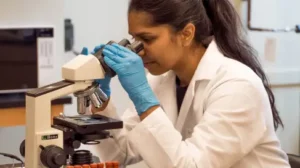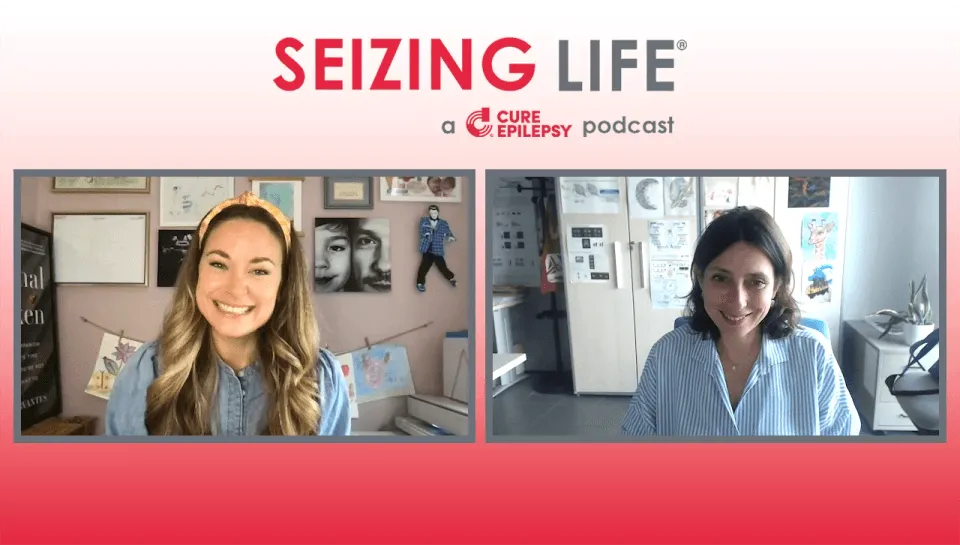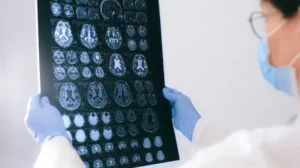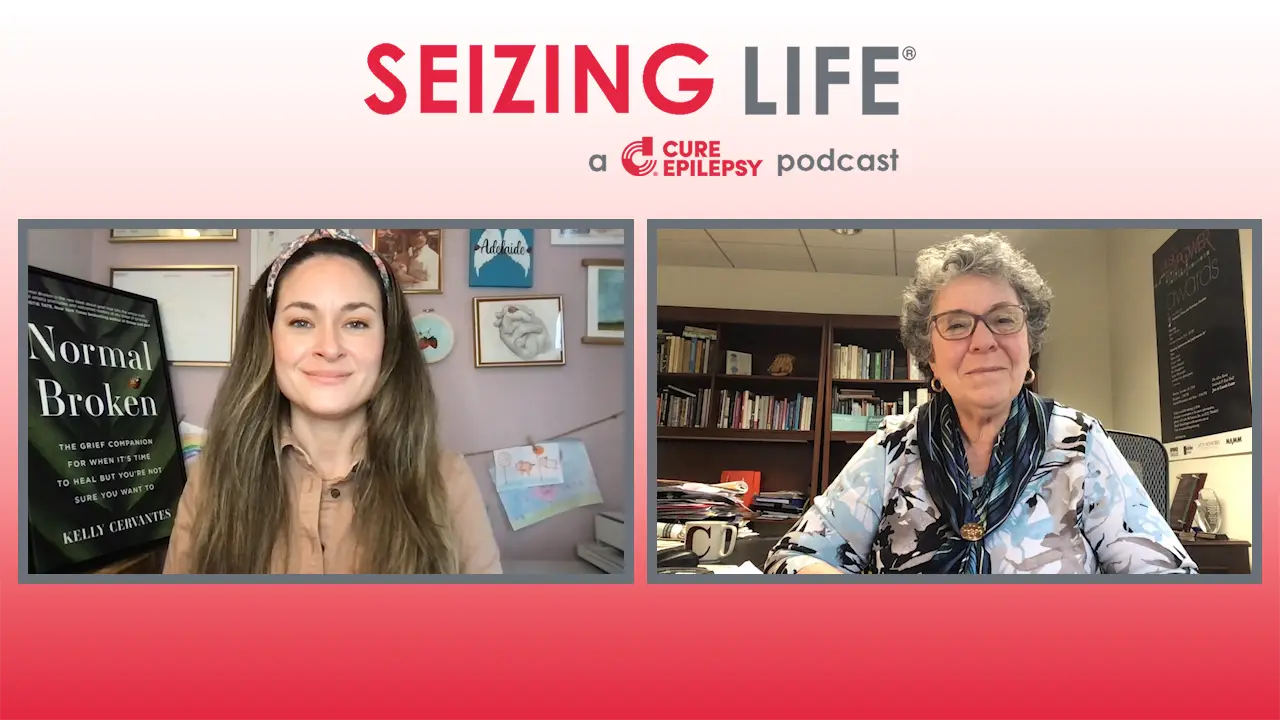Music Therapy for Neurologic Conditions: Understanding How It Works
Episode Overview
This month on Seizing Life® Dr. Connie Tomaino, music therapist and co-founder of the Institute for Music and Neurologic Function, discusses how music therapy is used to treat neurologic conditions and explains what we know about the power of music to heal the brain.
We all have certain songs we turn to in times of distress or celebration; songs that comfort, elevate, or transport us from the present to another time and place. More than any other art form or stimulus, music seems to possess a power to soothe, invigorate, or enhance our mental state. But why? What is the science behind the power of music? Can it really help to improve brain function in those with neurologic conditions like Parkinson’s, Alzheimer’s, and epilepsy? Dr. Connie Tomaino has been a music therapist for more than 40 years, co-founding the Institute for Music and Neurologic Function in 1995 with renowned author and neurologist Dr. Oliver Sachs. She tells us about the work that the institute does, the types of conditions that respond best to music therapy, and those conditions that can be aggravated by certain frequencies of sound. Dr. Tomaino provides a brief overview of the history of music therapy, explains the science behind it, what we have learned and what we don’t yet fully understand about the power of music to heal the brain.
Episode Transcript
Kelly Cervantes:
Hi, I’m Kelly Cervantes, and this is Seizing Life, a monthly podcast produced by CURE Epilepsy. This month I’m happy to welcome Dr. Connie Tomaino to the podcast. Dr. Tomaino is the executive director and co-founder of the Institute for Music and Neurologic Function, which she co-founded in 1995 with renowned author and neurologist, Oliver Sacks. Dr. Tomaino has been a music therapist for more than 40 years, and she is here today to discuss music therapy, what it is, how it is implemented, and who may benefit from a music therapy program. Dr. Tomaino, thank you so much for joining us today. I’ve been looking forward to this conversation ever since we got to chat in New York several months ago at a CURE Epilepsy event there. To begin, you are the executive director and co-founder of the Institute for Music and Neurologic Function. Can you give me a brief overview of what all of that means and what it is that you do specifically?
Dr. Connie Tomaino:
Sure. Thank you. It’s a pleasure to be here. The institute was founded in 1995 by myself and neurologist Dr. Oliver Sacks because back when we started working together in the ’80s, it was obvious to us that music had a profound effect on our patients with neurologic conditions, and yet there was nothing known about music in the brain. We got support to start the institute in 1995 to start the conversations between basic science and clinical music therapy so we could advance our knowledge about music in the brain and help to develop better uses of music in therapeutic situations to help people.
Kelly Cervantes:
I think people have a general understanding. We’ve heard of music therapy, but we don’t necessarily always understand what that means or how it works. The work that the institute does, it utilizes music in awakening and healing individuals with neurologic conditions. Can you tell us perhaps what some of those neurologic conditions are that respond the best to music therapy and perhaps some that don’t?
Dr. Connie Tomaino:
Sure. Well, there’s actually a broad range of conditions and situations that do benefit from music therapy. I want to be sure that people understand that when we talk about music therapy, we’re talking about the clinical applications of music by a professional music therapist who’s board certified, different from the general use of music by anyone to make us feel better. Sometimes people call that music the same way you would call asprin medicine, something that we know works in general. Depending on the person’s need, music can be used psychotherapeutically to reach somebody in an emotional state if somebody’s depressed or anxious. That’s a very specific way of engaging somebody to find out what music may work for them. If a person has Parkinson’s disease or a movement disorder, music may be used differently.
Dr. Connie Tomaino:
In those cases, we would use rhythm, a specific type of rhythm to help organize the motor areas of the brain so the person is able to move with more balance and coordination. If a person had a stroke or a brain injury, we may use music and words, words embedded in melody, to help activate preserved areas of the brain that still process words, but differently from language because the language has been damaged because of the stroke. Through that use of a parallel network in the brain, we can actually help the person regain speech. Then there’s all aspects of child development and language development where music can be really beneficial. Then things like pain management. There’s quite a bit of research now on how and why music affects the brain and why it’s such an effective therapeutic tool in a range of conditions.
Kelly Cervantes:
You beat me to the punch there. I was going to ask about children specifically. I think that piece of it is really fascinating that there is these different applications for adults who may have experienced a stroke or dementia versus a child. Are there certain disease states that do not respond to music therapy where that wouldn’t be an option?
Dr. Connie Tomaino:
Sure. There’s a few, and it’s because of the way the auditory system engages many areas of the brain activity. For example, somebody who has a certain type of epilepsy that is triggered by sound. There’s certain frequencies of sound, musicogenic epilepsy, certain frequencies of sound that could actually trigger a seizure. We want to be really mindful of what frequencies may do that and to avoid that if that were an issue. People who have frontal temporal dementia actually have damage to the temporal lobe that processes the tone, the melody of a song.
Dr. Connie Tomaino:
For them, music may sound like noise and be very distracting and uncomfortable. For those people we would want to be very mindful of not using music or using it differently. People who have… As we connect meaning and memories to music, we form these very strong connections. Sometimes those can be very depressing or trigger a trauma. We want to be mindful of a person’s history with music and not use a song or a piece of music that may trigger a negative event. If it does, the music therapist would process that to be able to help the person overcome those associations.
Kelly Cervantes:
That all makes so much sense. As with so much with the brain, I feel like there is just so little that we understand. Do we know why music therapy works? Why someone with Parkinson’s may respond to… You were talking about the rhythms or why someone who may have a verbal disability may be able to sing? We’ve seen these videos. Do we know why music works in our brains the way that it does?
Dr. Connie Tomaino:
The scientists have been really enlightening us on how and why music is so important. It’s because of the ways, for one thing is music isn’t just one stimulus. Music is the combination of multiple stimuli. It’s frequency of sound. It’s those frequencies of sound into musical notes. It’s the rhythm and organized pattern of sound. It’s the emotion and reaction and memories that we associate with that music. The auditory system in the brain is connected to every part of our brain, including our brain stem. Even through our auditory system, we could affect respiratory rate and heart rate, and it’s because of the robust nature of our auditory system from our evolutionary development. Because music is an auditory stimulus and because music engages multiple networks in order for us to hear a complete piece of music, every part of the brain is engaged. Because of those robust networks, we could trigger and organize and manipulate people’s emotional responses and physical responses and respiratory rate and even pain perception through very careful use of music.
Kelly Cervantes:
I hadn’t thought about that, how much of the brain it takes to process and auditory stimulus and the various effects that it can have. I know that we… Clearly, there is a ton of anecdotal evidence for this. I had it with my own daughter, Adelaide. We would put on traditional children’s music that was very upbeat, and she would kick and she would scream and she was very unhappy. But we put on jazz, particularly Frank Sinatra, and everything… She would just completely relax and calm, and her eyes would open. She would become more alert. I think it’s easy for us to see this anecdotal evidence, and I’m sure that there are scientists out there trying to prove the research behind it. Do we have those answers yet? Do we have the science beyond the anecdotes?
Dr. Connie Tomaino:
Sure. There’s quite a bit of research. For example, there’s been quite a bit of research on what’s called rhythmic auditory stimulation, which is the use of patterns of rhythm to help organize movement. That’s been very well studied, and it could be studied robustly because the pattern of sound is very specific and something that could be mapped very specifically in the brain in real time.
Kelly Cervantes:
That’s something that we can map using an MRI or an EEG?
Dr. Connie Tomaino:
EEG. Yeah. You can see the synchrony between the person’s movement and the beat of the music. Something very specific. There’s also been functional imaging of people who’ve gained speech after a stroke through something called melodic intonation therapy. Using a very rhythmic, melodic form of music therapy or speech therapy using music that engages the right side of the brain when the left side of the brain has been damaged. In these imaging studies, you can actually see the enhancement of the neural network on the right side of the brain after months of this very specific intervention. There’s been functional imaging studies and PET scans of people, what happens in the brain when somebody gets the chills or gets pleasure from listening to a preferred piece of music. We know that neurochemicals if dopamine and serotonin get released when somebody has this peak experience. We can see how it has a direct effect. Other studies have been done with more classical type of testing, so changes in cognitive skills in young children after very specific uses of music engagement.
Brandon:
Hi, this is Brandon from CURE Epilepsy. Did you know that 30% of those diagnosed with epilepsy do not respond to current medications? That is why for 25 years CURE Epilepsy has been committed to inspiring hope and delivering impact by funding patient-focused research to find a cure for epilepsy. Learn more about our mission and our research by visiting cureepilepsy.org. Now back to Seizing life.
Kelly Cervantes:
I am curious obviously about more specifically this idea of music therapy as it pertains to epilepsy. We’ve heard of the Mozart effect, Mozart Sonata for Two Pianos in D major, and how that has been proven to help people with epilepsy. What have you seen? What research have you seen? How can music therapy… How is it being used and how could it be used to help treat seizures?
Dr. Connie Tomaino:
Sure. Well, there’s multiple things. You mentioned the Mozart effect. When people talk about that, it’s a specific… It’s the Mozart Two Piano Sonata that Fran Rauscher and Gordon Shaw actually had studied, not related to epilepsy, but studied its effect on attention and IQ. Then other scientists want to see if there was a correlation between Mozart and its effect on epilepsy or something else. People who’ve studied it, there’s pros… People who’ve found it to be effective and other researchers who didn’t find the same results, but with the scientists who found the positive results believe it’s because of the frequency of sound and patterns within Mozart.
Dr. Connie Tomaino:
Very low tones that [inaudible 00:12:57] the harmonic structure of the Mozart that actually have an effect. When I’ve worked with people with epilepsy or when music therapists will work with somebody, we’re looking at what may be the trigger to their seizures. For example, if somebody has anxiety and stress, and if that is the prelude to a seizure, then we may be teaching them to find music to help slow them down and relax. In that case, that may delay or even stop a seizure from happening. Somebody who’s able to get a sense of when something may happen. I worked with a young girl who got seizures right before she went to sleep or as she was falling asleep, so that sudden drop-
Kelly Cervantes:
It’s a very, very common time for people getting seizures right as they’re falling asleep and right when they’re waking up. That’s in between states, very, very common.
Dr. Connie Tomaino:
In that case, what I did is I created a soundtrack of music that she liked in progressively slower rhythms. Instead of her body… Remember I said that the auditory system can actually regulate heart rate and respiratory rate. The slow rhythm actually trains these physiological states. By her listening to the music that she liked that was progressively getting slower, it actually lulled her into a safe sleep without the seizure. Again, we’re looking at the way about the person individually, what triggers the seizures, when do they come on and if there’s some connection between sound and those episodes that can be enhanced by music, a music-based application of some sort.
Kelly Cervantes:
I find that absolutely fascinating. It sounds like music therapy is something that not surprisingly needs to be customized to each individual patient. I wonder what that process looks like. Someone with epilepsy, we’ll keep it specific to epilepsy for this moment, they come to the Institute for Music and Neurologic Function and they meet with a therapist. What does that process look like? What does putting together a plan for a patient entail?
Dr. Connie Tomaino:
Sure. Well, there’s a conversation with the patient, and if it’s a very young child, they would be with the parent too, exploring the ways they use music in their life already, finding something about their seizure activity and what may precipitate it so we get an understanding of what those triggers may be. Then working out… We may do something if it’s related to stress management, anxiety, we may have the person improvise with us to see how they interact with music and the type of music they create. With technology, we could create a whole range of music to help with sedation at the end, helping them feel calm. We may give them strategies for how they can incorporate music in their life, whether it’s waking up or in the evening or throughout the day. There’s quite a few things that you would do. But again, like you mentioned, it’s definitely individually based. Whether we play music together, engage in music self-expression, or explore different types of music that the person may have [inaudible 00:16:43] an interest in to create a personalized playlist or whatever, that might be helpful too.
Kelly Cervantes:
I want to make clear, I suppose, that this is a very specialized kind of music therapy, that you’re trained, it is board certified. Can you give us an overview of what that training looks like?
Dr. Connie Tomaino:
Sure. Music therapists have a degree in music therapy from an accredited academic program, and it maybe at the bachelor’s level or at the master’s level. Some of us have doctoral degrees in music therapy. Throughout the academic training, there’s clinical training, which is culminated in a 1200-hour clinical supervised internship. But once that’s successfully completed, music therapists sit for a board exam and needs to pass that board exam to become an MTBC, which is music therapist board certified. Then every five years that certificate gets reviewed based on continuing the education.
Kelly Cervantes:
This is not unlike being a physical therapist or an occupational therapist or a social worker or anything like that. This is the same level of training and boards and continuing education. I just think that’s so important for people to understand that this is truly a science-based clinical practice beyond sitting around and just trying to help someone relax by listening to music. That this really is backed up and with evidence-based research that proves the efficacy.
Dr. Connie Tomaino:
Exactly. In fact, [inaudible 00:18:35] so many times I’ll get questions and people say, “Well, what type of music works best?” Just like you mentioned, once I doesn’t fit. All of us are individuals. All of our auditory systems are different based on our lived history and our associations. We’re really careful and mindful about the individual and what’s going to work for them. If anybody gave you a prescription, I’d question what that if it wasn’t based on that individual’s need and background.
Kelly Cervantes:
If someone is listening to this podcast and their interest is piqued and they want to know more, they want to know how to find a certified music therapist to speak with, how would they go about finding the right person?
Dr. Connie Tomaino:
Sure. Well, there are listings of music therapists, board certified music therapists through the Certification Board for Music Therapy, that’s cbmt.org, as well as the American Music Therapy Association, which is musictherapy.org. Now, working with people with neurologic conditions like epilepsy requires additional training. If somebody does find a music therapist in their area, they should ask them about their additional training and background.
Kelly Cervantes:
Is this something that could be done virtually or does it need to be done in person? Because I’m just thinking if someone lives rurally, or not for nothing, I have a sneaking suspicion that there are not a lot of certified music therapists that have that epilepsy specialty. I always wonder, is it accessible? Is it something that can be done virtually so that more people can have access to it?
Dr. Connie Tomaino:
Sure. Something like the initial assessment and whether music could be beneficial could be done virtually, and people could reach out to us too, which is imnf, so the initials of the institute, .org. There’s also an Academy of Neurologic Music Therapists, music therapists who’ve had additional training in neurologic conditions, and people can look there as well.
Kelly Cervantes:
That’s great. Now, I understand that the institute also conducts research through grants from various organizations. As CURE Epilepsy, we are always interested in ongoing research and what is on the horizon. Can you tell us a little bit about what research is currently being conducted at this time?
Dr. Connie Tomaino:
Yes. We collaborate with neuroscientists at various institutions. For example, we were just working with researchers looking at gamma frequency sound and its effect on short-term memory improvement. Additionally, I’m part of a consulting team that helps with an app called Spiritune, that Spiritune uses certain original music that can affect people’s emotional state. We recently did a study with New York University neuroscientists on the effect of Spiritune, on the use of Spiritune compared to other types of streaming programs on anxiety, then on task responsiveness.
Kelly Cervantes:
It just makes me think so much of there’s this application potentially for seizures and for epilepsy, but even if someone has a kind of epilepsy that may not be responsive to music therapy, there are so many comorbidities that you just mentioned just now, the anxiety and the depression, the memory loss, all of these things that so often go along with epilepsy. Even if a patient does not find that the music therapy helps with the prevention of their seizures, there could still be a benefit from one of the many, many comorbidities that come along with the effect that epilepsy has long-term on an individual’s life.
Kelly Cervantes:
I find the work absolutely fascinating, especially in a world where so much of the treatments for a lot of these conditions are either, A, invasive, or B, have side effect profiles that are prohibitive or nasty. Somewhere in between there, there’s something very natural about music and to know that this is scientifically proven. I’m just so grateful for your time today, for spending this time with us, for explaining this and for your commitment to continuing with this research and helping our epilepsy community. Thank you so much, Dr. Tomaino.
Dr. Connie Tomaino:
My pleasure. Thank you.
Kelly Cervantes:
Thank you, Dr. Tomaino, for sharing your experiences and insights on music therapy and its benefits for people living with neurologic conditions like Alzheimer’s, Parkinson’s, and epilepsy. For those living with epilepsy, one third are unable to achieve seizure control through currently available medications. That is why CURE Epilepsy was founded over 25 years ago to unravel the complexity of epilepsy, accelerate research and develop new therapies. Our mission is to fund breakthrough research that will transform the lives of people with epilepsy as we lead the search for a cure. If you would like to support CURE Epilepsy in this mission, please visit cureepilepsy.org/donate. Thank you.
Legal Disclaimer:
The opinions expressed in this podcast do not necessarily reflect the views of CURE Epilepsy. The information contained herein is provided for general information only and does not offer medical advice or recommendations. Individuals should not rely on this information as a substitute for consultations with qualified healthcare professionals who are familiar with individual medical conditions and needs. CURE Epilepsy strongly recommends that care and treatment decisions related to epilepsy and any other medical conditions be made in consultation with a patient’s physician or other qualified healthcare professionals who are familiar with the individual’s specific health situation.





